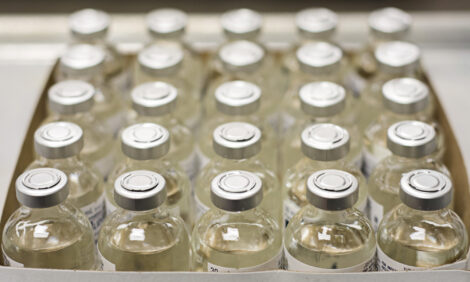



CME: Wholesale Turkey Prices Deemed Excellent
US - The turkey business struggled mightly in the wake of the 2012 crop, write Steve Meyer and Len Steiner.Cattle slaughter continued to lag far behind year ago levels last week with only 565,000 head moving through plants, 8.8 per cent fewer than one year ago.
That continued a patter of large reductions that has been in place since July. We would not argue with anyone who said that really applies to the entire year but the shortfalls did get larger in July. Cow slaughter for the week ending 3 October was only 99,300 head, 14.6 per cent lower than last year and 22 per cent lower than the five year average of 126,700 head.
Those, of course, are the operative numbers from a cow beef supply perspective and a clear reason that trimmings and end meats continue to be well supported. Using average cow slaughter weights, these imply cow beef production 12.5 per cent lower than last year bringing the year-to-date (YTD) change for cow beef output to –13.1 per cent.
The beef cow slaughter numbers are even more shocking, we think, in that they were 17.5 per cent lower than one year ago and are down 20.2 per cent from last year over the past four weeks. This number is more important when we think about future beef supplies as it is indicates that beef cows are indeed being retained at a very high rate, increasing the potential for a larger calf crop next spring.
Dairy cow slaughter is also lower given record high milk prices but the year on year decline there is a mere 10.7 per cent .Cattle prices were virtually unchanged for the week. The Choice cutout gained $4.000 or 1.6 per cent to get very near $250/cwt. once again.
FI hog slaughter of 2.180 million head was up two per cent from last week – not surprising for this time of year – but remained 4.8 per cent lower than last year’s 2.290 million head. The week’s run was 1.4 per cent lower than our forecast level of 2.210 million head.n;
The forecast is based on the market herd inventories of the September Hogs and Pigs report. Average hog weights continue to be record large for this time of year but are not growing nearly as quickly as they were one year ago when lower priced feed was allowing producers to profitably add more pounds to their market hogs. The year on year increase in the average weight of all market hogs was just 1.9 per cent last week.
That’s the smallest year on year weight increase since the week of 10 October, 2013 &nash; one year and one week ago. Producer sold barrows and gilts averaged 213.5 pounds last week, just over seven pounds or 3.5 per cent more than one year ago. But those increases are the smallest since March. We certainly do not expect weights to fall below year ago levels any time soon but the amount of slaughter shortfall for which they are compensating is getting smaller and smaller.
Hog prices were one to four per cent lower, pressured by a six per cent decline in the pork cutout value – a decline we have been expecting give the size and unusual timing of this recent rally. The numbers in the Percent Change column for chicken in the authors' weekly Production and Price Summary table continue to be positive and noticeably larger than earlier this year.
That statement is especially true of egg sets and chick placements which were up 3.7 per cent and 3.0 per cent, respectively, versus one year ago last week. While slaughter levels are still hardly higher than last year, production was 3.8 per cent higher the week of 10 October, pushed primarily by the average weight of broilers. Meyer and Steiner believe the sharp increases in average weights are very significant indicators of the beginning expansion of the broiler sector.
Remember that this is, in general, two sectors big boning birds and small parts birds. There are some birds with weights between those extremes but most fall into one camp or the other. The average could be increased by growing both types but the recent history is that the average increases when the proportion of big birds increases – and that is the sector that most observers expect to grow. We think the recent increase in average weights indicates that the boning bird sector is finally growing in response to lower costs and higher profits. We expect the growth to accelerate with today’s even lower feed costs. Which brings us to turkey.
This business struggled mightily in the wake of the 2012 crop. As can be seen below, poult (i.e. turkey chick) placements were the lowest of the last five years for every month from March 2013 through February 2014. They have increased markedly since then and exceeded year ago levels by 10.4 per cent in June and nearly 10 per cent last month. Wholesale turkey prices have been excellent this year and turkey producers are responding, especially with costs lower as well.
Turkey accounts for 15.4 pounds of per capita consumption this year. That figure peaked at 17.7 pounds in 2007 and 2008. Total per capita meat and poultry consumption is expected to 201.2 pound this year, down from a peak of 221.7 in 2007.








